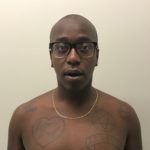ALTERNATE ENDINGS, RADICAL BEGINNINGS was the 28th annual iteration of Visual AIDS’ longstanding Day With(out) Art project. Curated by Erin Christovale and Vivian Crockett for Visual AIDS, the video program prioritizes Black narratives within the ongoing AIDS epidemic, commissioning seven new and innovative short videos from artists Mykki Blanco, Cheryl Dunye & Ellen Spiro, Tourmaline, Thomas Allen Harris, Kia LaBeija, Tiona Nekkia McClodden and Brontez Purnell. Below, curators Erin Christovale and Vivian Crockett discuss the scope and stakes of Day With(out) Art 2017.
ALTERNATE ENDINGS, RADICAL BEGINNINGS as a title came from a conversation we had around the idea of radicality and its roots in a black art tradition. The word ‘radical’ for us is tied to the Angela Davis quote: “Radical simply means ‘grasping things at the root.'” The concept of roots speaks to enduring histories, in both negative and positive terms. Sometimes we use radical when we talk about things that are systemic, that we need to change or that are connected to histories of oppression. But radical also evokes a sense of resistance and forms of creation that have been around for a long time, and new possibilities that can sprout from the past and the present.
An ongoing project that Erin has been curating is Black Radical Imagination, a traveling film project that looks at experimental moving image by filmmakers and visual artists within the African diaspora. In Robin D.G. Kelley's book Freedom Dreams: The Black Radical Imagination, he writes about black liberation movements around the world, particularly in America, and how these major movements wouldn’t have been possible if someone didn’t imagine a new future outside of an oppressive present. We’ve been thinking about what it means to practice radical imagination and what that does for those who are usually marginalized. That notion really speaks to all the filmmakers and visual artists that we commissioned for this program. The artists are radically thinking about the HIV/AIDS epidemic as Black people in this country, asserting themselves and their creative narratives amidst an ongoing discourse around who is invited into institutions.
Through her academic and museum work, Vivian thinks a lot about what gets historicized and what gets written into and out of artistic narratives. We were drawn to how powerful it could be to preserve a legacy that is usually fractured or not prioritized in a larger art historical canon. As an initial point, we were both coming off of working on a project together with Cheryl Dunye, celebrating the 20th anniversary of her groundbreaking film The Watermelon Woman (1996). A lot of our conversations around The Watermelon Woman were about the absences and the exclusions in archives and the (il)legibility of Black queerness in a historical sense. In trying to coordinate contemporary responses to the film 20 years later, it became about finding themes that resonate in a long-term capacity, intergenerationally, and the way history is transmitted by the relationships that we forward with people that have been in our communities.
In curating ALTERNATE ENDINGS, RADICAL BEGINNINGS, it was important for us to consider filmmakers and artists like Cheryl Dunye, Ellen Spiro and Thomas Allen Harris who were reflecting on the epidemic at the time when it came to fore in the 1980s and 1990s. Thomas was actively producing work then about the HIV/AIDS epidemic for a television show called The Eleventh Hour. Cheryl was thinking about her personal narrative, as a Black queer woman, and how archives are honored and preserved. Ellen created a documentary called DiAna’s Hair Ego (1991) about DiAna DiAna, a Black woman in the South who took it upon herself to teach safe sex in her salon at the onset of the epidemic. They were enmeshed in their communities in ways that felt foundational for this program. From there, it became about projecting into the future and thinking about artists and filmmakers who are also considering these narratives.
What's striking is that many of the projects by the younger generation of filmmakers are grappling with archive and legacy. Tiona Nekkia McClodden’s broader The Brad Johnson Project comes out of her trilogy that looks at three Black gay male figures: Essex Hemphill, Julius Eastman and Brad Johnson. Tiona is considering how her position as a queer, Black woman relates to these histories and is in dialogue with how these figures have been remembered or have failed to be remembered. Simultaneously, she is thinking critically about her own legacy, negotiating her own presence within the art world in how she structures her projects in reflective, deeply spiritual and highly personal ways. Tourmaline is a long-term activist and archivist and the way that she approaches filmmaking is very much part of impulses as an archivist, activist and artist. In particular, she is activating personal history in dialogue with longer sociopolitical histories of a place like New York City and the histories of trans people of color through these spaces. Kia LaBeija is also thinking through the way that she is remembered and how her artistic practice is interfacing with broader artistic discourses while also often in dialogue with her mother's history in long-term political organizing and activism.
A point of intersection for Brontez Purnell and Mykki Blanco is that they are both grappling with their intimate relationships and what has come up for them in trying to love and fuck as young HIV+ people today. Brontez has taken on so many different points of creativity in a way that is very bold, not only as a filmmaker, but also as a writer and a musician coming from the DIY punk scene in the Bay Area. As a highly public music persona, Mykki has really used that platform to have conversations about living with HIV more frequently in the public eye, and Mykki’s video utilizes endurance and performativity to highlight strength and resilience.
Centering the intersections of blackness, HIV/AIDS and cultural production opens up to a lot of plurality. There is something really powerful about taking up space in this explicit way and having that space to tell multiple stories at once. The myriad of ways in which the artists are creating their films is vastly different and not necessarily from the foundation of shared identity. It considers this idea of diaspora as always evolving. The films assert how expansive diaspora and queerness are.
Day With(out) Art 2017’s premiere at The Whitney Museum of American Art is significant in thinking about the Meatpacking District and its connections to trans and queer of color histories and various forms of survival, in spite of capitalism, homophobia, transphobia, anti-blackness, criminalization and many other forces that have impacted the presence of communities in this area. We have been having explicit conversations around the spaces where our projects as curators and artists are shown, in an open dialogue that's not about condemning or demonizing a space but about speaking to the complex realities with which we are interfacing when we are in these spaces. It’s about continuing to open up and assert space, specifically for Black queer folks.
Black folks are 44% of those newly diagnosed with HIV in this nation, yet there is little discourse and conversation around the urgency of this matter. We witnessed the critiques of whitewashing that were happening around the exhibition Art AIDS America. As curators of a program like this, it’s absolutely our responsibility to intervene in that conversation, which remains very much dominated by white men. Our varied histories are not being sufficiently honored, historicized and remembered. In spite of these exclusions and the fact that this program somewhat responds to that reality, it is very much centered on telling our stories without needing affirmation from mainstream, normative systems and structures. We are asserting that these artists have been doing this work and that these histories have existed, whether or not they are recognized. ALTERNATE ENDINGS, RADICAL BEGINNINGS is a reclamation and affirmation of what has always been here.
~As told to Alex Fialho
Erin Christovale is the Assistant Curator at the Hammer Museum in Los Angeles. She is the curator of Black Radical Imagination with Amir George, which has screened both nationally and internationally in spaces such as MoMA PS1, MOCA Los Angeles, and the Museo Taller José Clemente Orozco. Exhibitions include a/wake in the water: Meditations on Disaster (2014) at the Museum of Contemporary African Diasporan Arts, Memoirs of A Watermelon Woman (2016) and A Subtle Likeness (2016) at the ONE National Gay and Lesbian Archives, and S/Election: Democracy, Citizenship, Freedom (2016) at the Los Angeles Municipal Art Gallery. She is currently organizing Made in L.A. 2018 with Anne Ellegood at the Hammer Museum.
Vivian Crockett is a NY-based independent researcher, scholar, and curator focusing largely on art of African diasporas, (Afro)Latinx diasporas, and Latin America at the varied intersections of race, gender, and queer theory. She is a Ph.D. candidate in art history at Columbia University whose dissertation examines artistic practices and discourses in Brazil in the sixties and seventies. Her scholarly and cultural work seeks to assert a radically political analysis of modern and contemporary art and to foster the remembrance and visioning of cultural spaces that merge a commitment to artistic and cultural production with sociopolitical justice and collective liberation. She is the 2017-18 Mellon Museum Research Consortium Fellow in Media and Performance Art at the Museum of Modern Art, New York.



